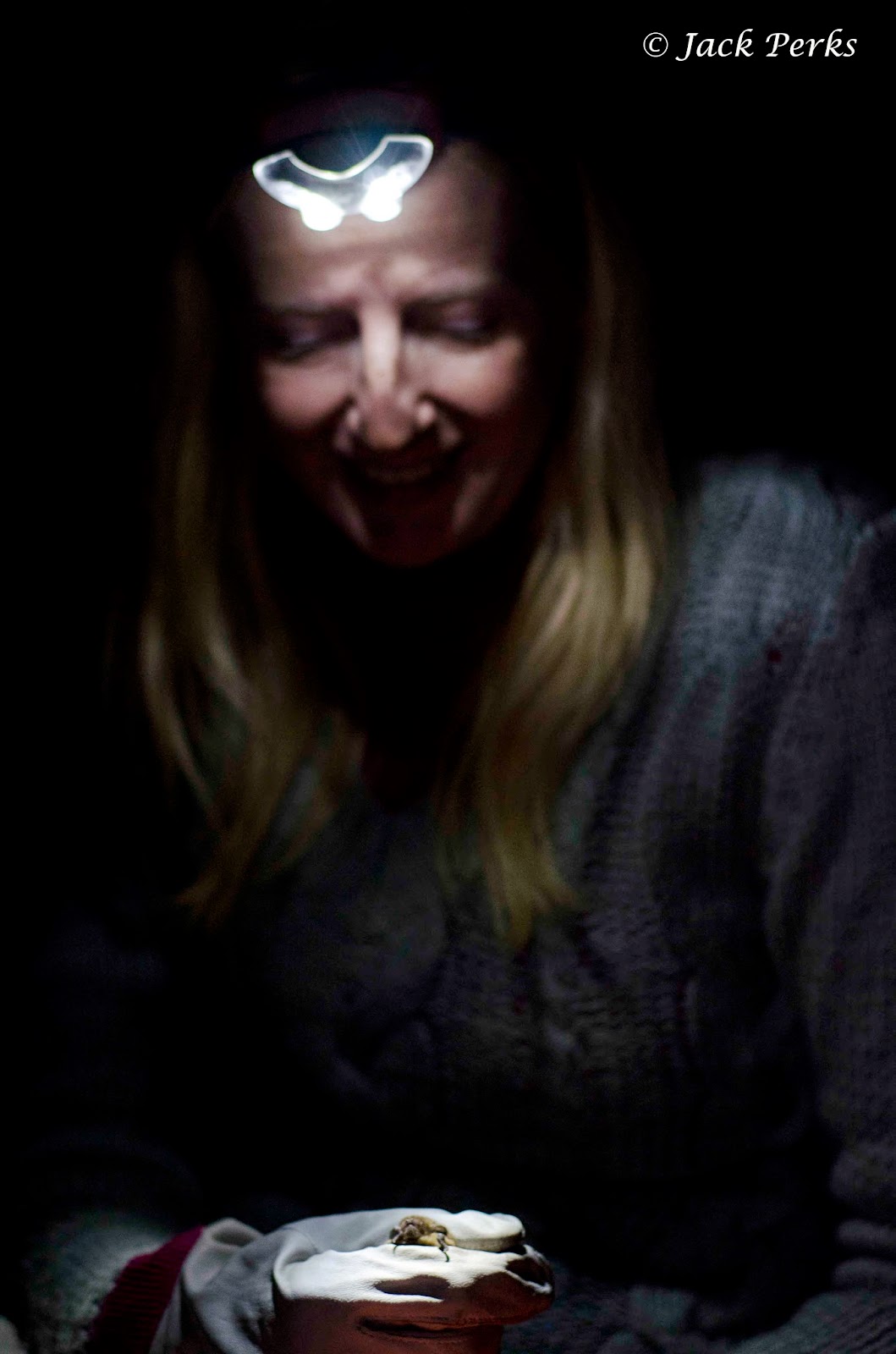Anthony McKeown and Angelena Efstathiou setting up the harp trap
Putting it in a clearing where the bats are likely to fly
Different frequencies attract different species of bat
'A Soprano in the hand is worth two in the roost'
The most common species we caught was the Soprano Pipistrelle, which up until 1997 was classed as the same species as the common pipistrelle, the most common bat in the UK and the one you're most likely to see in towns and cities around street lamps.
Lorna Griffiths with a Soprano Pipistrelle
The use of gloves is used so disease can't be passed from bat to person and vice versa. One thing I quickly realised was how small they are, weighing less than a £1 coin.
Special scales are used as the bats are so light
Vital data collected
Sharp teeth used for eating various insects including mosquitos and midges
Natterers Bat in Matt Cook's hand
Five Bat Facts
- A group of bats is called a 'colony'
- Bats hang upside down for two reasons: they can get high up and away from their predators and enemies; by just turning loose and flapping their wings they get 'instant flight'
- A young bat is called a 'pup'
- Bats hibernate or migrate to warmer climes in the winter
- The largest bat in the UK is the Noctule, weighing 40g and a wingspan of up to 40cm
If you would like to know more about bats in Nottinghamshire check out
http://www.southnottsbatgroup.org.uk/
Or nationally you can get in touch with the Bat Conservation Trust
http://www.bats.org.uk/pages/uk_bats.html
BBC Wildlife Local Patch Reporter
Jack Perks@JackPerksPhoto
Facebook: Jack Perks Photography
Website: www.jackperksphotography.com









We're glad you enjoyed it Jack! Hopefully we'll see you at another event in the future :) thanks for the photographs and advice!
ReplyDeleteThis comment has been removed by a blog administrator.
ReplyDeleteThis comment has been removed by a blog administrator.
ReplyDeleteThis comment has been removed by a blog administrator.
ReplyDelete